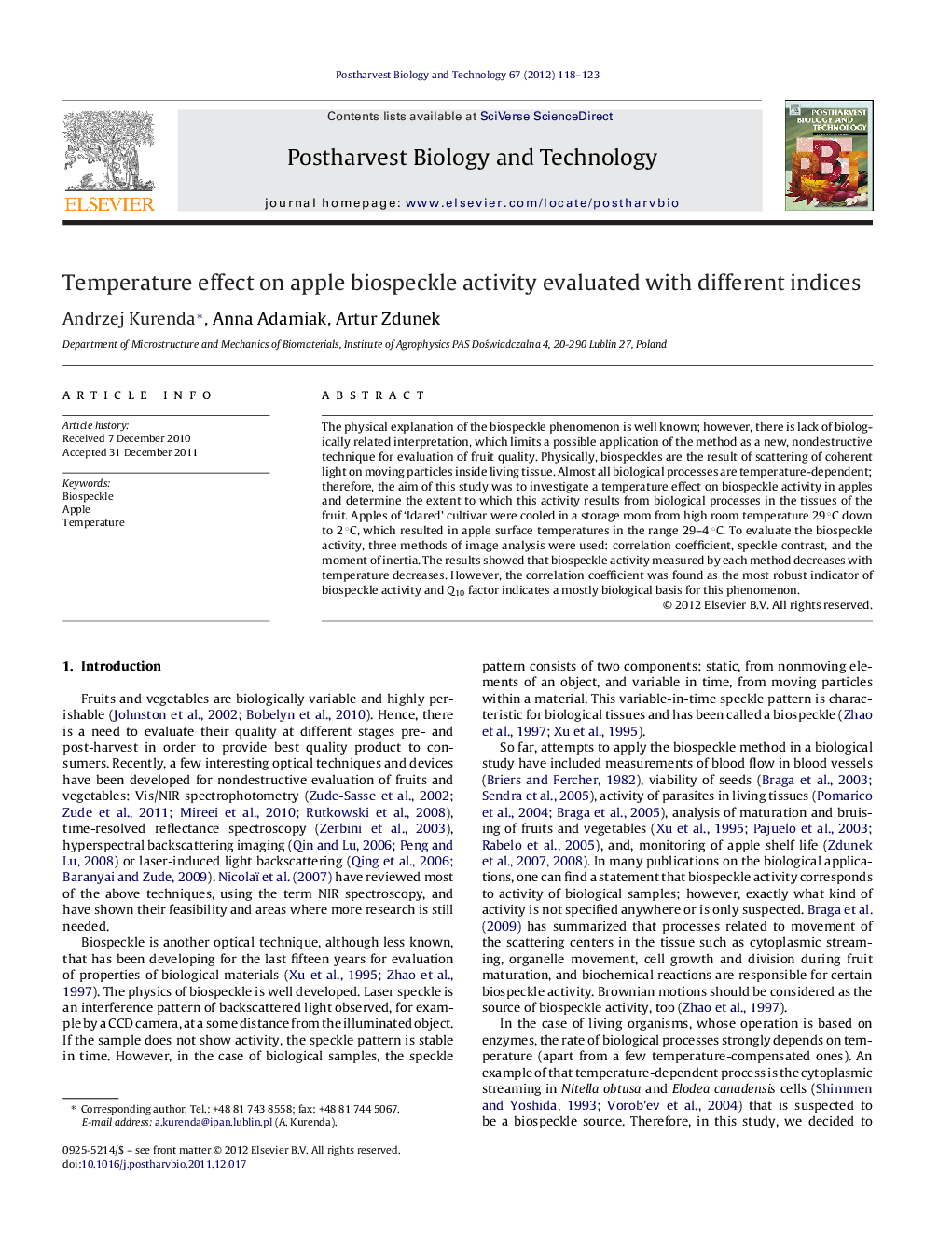| Article ID | Journal | Published Year | Pages | File Type |
|---|---|---|---|---|
| 4518759 | Postharvest Biology and Technology | 2012 | 6 Pages |
The physical explanation of the biospeckle phenomenon is well known; however, there is lack of biologically related interpretation, which limits a possible application of the method as a new, nondestructive technique for evaluation of fruit quality. Physically, biospeckles are the result of scattering of coherent light on moving particles inside living tissue. Almost all biological processes are temperature-dependent; therefore, the aim of this study was to investigate a temperature effect on biospeckle activity in apples and determine the extent to which this activity results from biological processes in the tissues of the fruit. Apples of ‘Idared’ cultivar were cooled in a storage room from high room temperature 29 °C down to 2 °C, which resulted in apple surface temperatures in the range 29–4 °C. To evaluate the biospeckle activity, three methods of image analysis were used: correlation coefficient, speckle contrast, and the moment of inertia. The results showed that biospeckle activity measured by each method decreases with temperature decreases. However, the correlation coefficient was found as the most robust indicator of biospeckle activity and Q10 factor indicates a mostly biological basis for this phenomenon.
► Biospeckle activity-temperature dependence in apples was measured by three indices. ► One index shows a significant correlation between temperature and biospeckle activity. ► Q10 factor for the biospeckle activity is similar to that recorded for the biochemical reactions. ► Biospeckle activity may be the result of active transport of particles and organelles.
